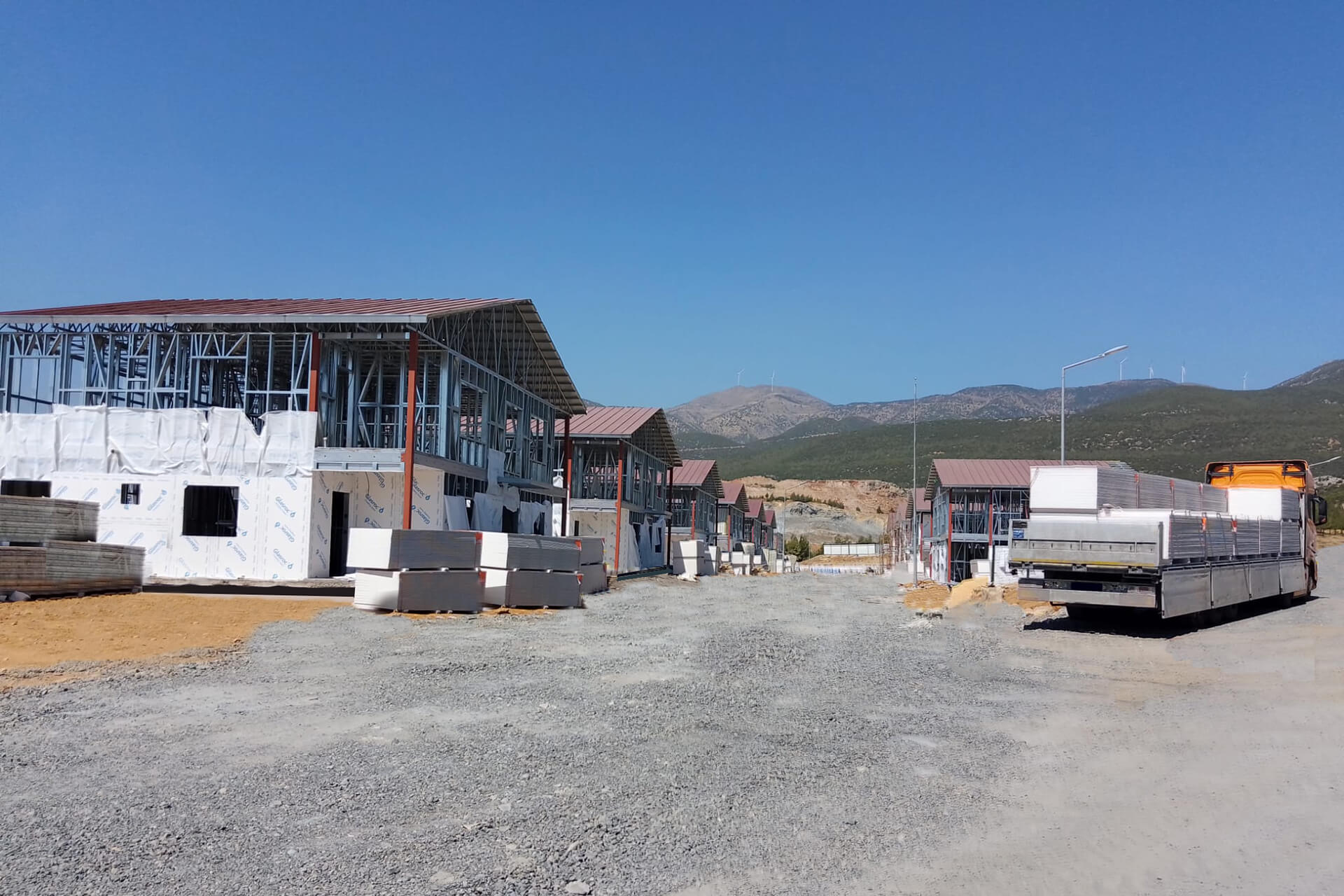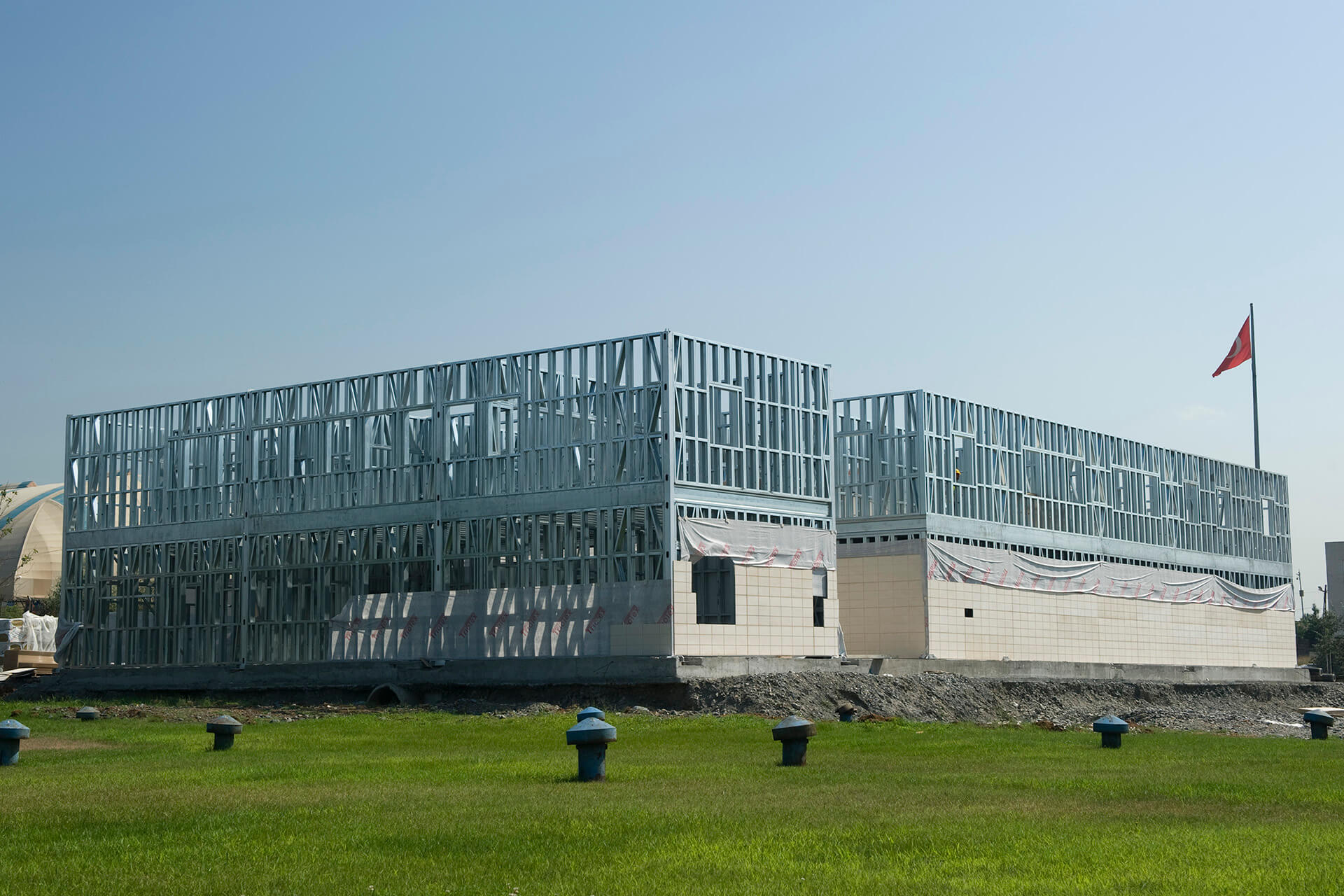The Top 5 Ways to Insulate Steel Structures
Steel structure insulation is essential for maintaining energy efficiency, preventing moisture-related issues, and enhancing overall comfort in metal buildings. Unlike traditional buildings, steel structures are more prone to temperature fluctuations and condensation, which makes proper insulation a crucial part of their construction. In this comprehensive guide, you’ll learn the most effective ways to insulate your steel building, discover the best materials for the job, and avoid the most common mistakes.

How to Insulate a Steel Building?
Insulating a steel building involves more than just adding insulation material to the walls. It requires a strategic approach that considers the building’s size, purpose, and location. Since steel conducts heat and cold efficiently, failing to insulate properly can lead to energy loss, condensation, and even structural damage over time.
Whether the steel structure is a warehouse, workshop, or residential prefab building, insulation enhances thermal comfort and protects interior contents. Insulation systems can also improve fire resistance and soundproofing. The goal of proper steel structure insulation is to create a controlled interior environment that resists external weather extremes and remains comfortable throughout the year.

How to Insulate a Steel Building Step by Step
Insulating a steel building step by step ensures both energy efficiency and structural longevity. By following a systematic approach, from material selection to sealing and finishing, you can achieve optimal thermal performance and protection against moisture.
Step 1: Choose the Right Insulation Material
Selecting the appropriate insulation is the foundation of effective steel building insulation. Common options include fiberglass batts, spray foam, rigid foam boards, and reflective foil insulation. Each material has its strengths depending on the building’s use and climate zone. Spray foam, for example, provides an excellent air seal but comes at a higher cost. Fiberglass batts are budget-friendly and easy to install.
When deciding, consider factors like R-value (thermal resistance), moisture resistance, fire rating, and ease of installation. The right material will not only enhance energy efficiency but also extend the life of your building.
Step 2: Prepare the Steel Frame for Insulation
Before applying insulation, it’s crucial to prepare the steel frame. This includes cleaning the surfaces, inspecting for rust or damage, and making necessary repairs. A clean and dry surface ensures that the insulation adheres properly and performs as expected.
During preparation, structural elements like wall studs, roof supports, and floor beams should be assessed. Any structural imperfections should be corrected to ensure the insulation fits securely and functions effectively.
Step 3: Install Vapor Barriers Where Needed
A vapor barrier is essential in areas with high humidity or large temperature differences between indoors and outdoors. It prevents moisture from passing through the insulation and condensing on cold steel surfaces, which could lead to mold or corrosion.
Install vapor barriers on the warm side of the insulation layer. For example, in cold climates, it should be placed on the interior side. Choosing a breathable barrier allows water vapor to escape while still preventing moisture buildup inside the walls or roof system.
Step 4: Apply the Insulation to Walls, Roof & Floor
Once the frame and vapor barriers are ready, apply the selected insulation material to all parts of the building envelope—walls, ceiling, and floor. Each area requires special attention. For example, roof insulation should handle intense sun exposure and potential snow loads, while wall insulation must fit snugly between steel framing components.
Install materials without compressing them, as this can reduce their thermal efficiency. Fastening systems or adhesive products may be used depending on the insulation type. The goal is full, continuous coverage to avoid cold spots or energy leakage.
Step 5: Seal Gaps and Finish with Interior Cladding
After insulation is installed, the next step is sealing. Gaps, joints, and seams should be sealed using caulk, foam spray, or metal tape to prevent drafts and thermal bridging. Sealing improves both thermal and acoustic performance.
Finally, cover the insulated sections with interior cladding—often drywall, metal panels, or other fire-resistant materials. This not only protects the insulation but also improves the interior appearance and fire safety of the steel building.
Best Insulation Materials for Steel Buildings
Choosing the right materials is a vital part of successful steel structure insulation. The most commonly used options include:
- Fiberglass Batts: Affordable, easy to install, and available in pre-cut sizes.
- Spray Foam Insulation: Provides an airtight seal and high R-values but requires professional installation.
- Rigid Foam Boards: Durable and water-resistant, ideal for roofs and foundations.
- Reflective Foil Insulation: Effective in hot climates where radiant heat is a concern.
Each material serves different needs. While spray foam offers superior sealing and moisture resistance, fiberglass is preferred in budget-sensitive projects. Reflective insulation is often used in combination with other materials to address specific thermal performance goals.
Benefits of Insulating a Steel Building
The advantages of steel structure insulation go beyond temperature control. One of the most immediate benefits is energy efficiency—well-insulated steel buildings require less heating and cooling, significantly reducing energy bills. This is particularly important for large commercial or industrial steel structures.
Additionally, insulation minimizes condensation, which helps prevent rust, mold, and corrosion. It also improves indoor comfort by regulating internal temperatures and reducing noise pollution. Insulated steel buildings are also more environmentally friendly, as they use energy more efficiently and often qualify for green building certifications.
Climate Considerations for Insulating Steel Structures
Climate plays a major role in determining how and what type of insulation to use. In hot, dry climates, reflective insulation may be more effective at reducing heat gain. In colder regions, materials with high R-values and vapor barriers are necessary to maintain warmth and prevent condensation.
In humid areas, moisture control is just as critical as thermal performance. In such cases, using closed-cell spray foam or installing a combination of vapor barriers and moisture-resistant insulation can ensure long-term performance. Adapting insulation strategies to the building’s location is key to maximizing its effectiveness.
Common Insulation Mistakes to Avoid in Steel Buildings
Mistakes in steel structure insulation can result in poor performance and even structural damage. One common error is neglecting vapor barrier installation, which can lead to trapped moisture and eventual corrosion. Another mistake is compressing insulation during installation, which reduces its thermal efficiency.
Poor sealing around edges and joints can lead to air leakage and energy loss. Using the wrong insulation type for your climate or structure is another pitfall. Avoiding these errors requires a thoughtful plan, quality materials, and in some cases, professional advice to ensure long-term efficiency and structural integrity.

